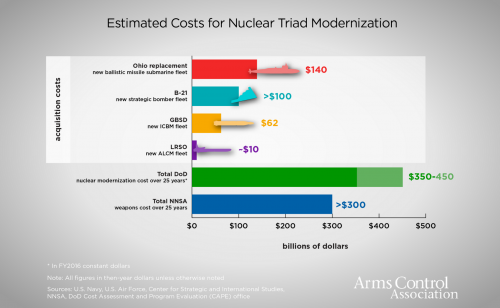The Air Force hopes to secure a blessing by August from Pentagon leaders -- previously expected in June -- to launch the Long-Range Standoff Weapon acquisition, another slight delay to the anticipated competition to develop and procure a fleet of about 1,000 new cruise missiles designed to carry nuclear warheads the service believes could cost about $8.3 billion.
On May 25, Pentagon acquisition executive Frank Kendall reviewed the Air Force's request to transition the new cruise missile program into the technology maturation and risk reduction (TMRR) phase of the acquisition process and directed the service to further examine projected costs. While the service had previously expected to address outstanding questions associated with the LRSO milestone A review in a few weeks, the Air Force now believes it will be "early- to mid-August," according to a Pentagon official.
In preparation for the milestone A review, the Office of the Secretary of Defense prepared an independent cost estimate. While details of that estimate are not public, OSD transmitted to Congress in March a previously unreported document on the LRSO program.
"Total investment costs for LRSO are preliminary and the independent cost estimate is not complete," the report states. "An early draft estimate for LRSO total investment costs (development and procurement) provided to Congress in FY-15 was $8.3 billion."
The Air Force, according to the report, "plans to procure approximately 1,000 LRSO cruise missile bodies" that could be mated with a nuclear warhead. "In alignment with U.S. nuclear employment strategy, the LRSO quantity will support U.S. Strategic Command nuclear mission requirements, [provide] necessary spares to meet operational availability requirements, and supply sufficient non-nuclear missile bodies to demonstrate weapon system confidence levels through ongoing ground and flight tests."
An LRSO inventory of this size would be approximately twice the number of nuclear-armed Air-Launched Cruise Missiles in the current Air Force inventory. The LRSO program would allow for a stockpile of cruise missiles that could be expended in non-nuclear testing to provide "critical reliability data for maintaining LRSO as a credible nuclear deterrent during its lifecycle," according to the report.
"As a result . . . the number of cruise missile bodies being procured significantly exceeds the number of nuclear warheads being produced," according to the report. "The number of nuclear-armed LRSO cruise missiles (i.e. mated to a nuclear warhead) is expected to be equivalent to the current ALCM nuclear force," the report states.
The four-page document is titled "Report to Congress on the Number of Long-Range Standoff Weapons as Specified by Section 1657 of the National Defense Authorization Act for Fiscal Year 2016."
While the Air Force is responsible for developing the LRSO cruise missile body, the Energy Department is responsible for the weapon's nuclear warhead. DOE's W80-4 Life Extension Program aims to use the existing insensitive high explosive design of the ALCM as well as incorporate modern components and adopt "enhanced surety options." In a March report to Congress, DOE estimated the LRSO warhead was scheduled for first-unit production in FY-25. The estimated development and production cost for the LRSO warhead -- from FY-16 through 2032 -- is $8.6 billion, according to the report. That, along with the cruise missile body, would bring the LRSO program cost to about $17 billion. -- Jason Sherman

